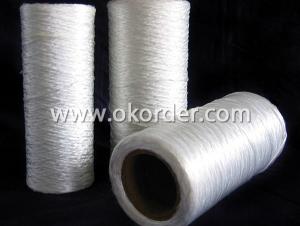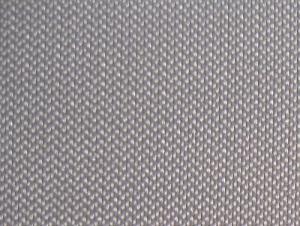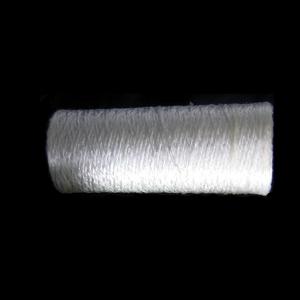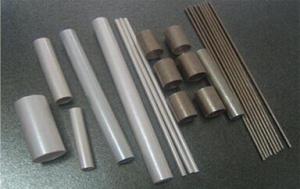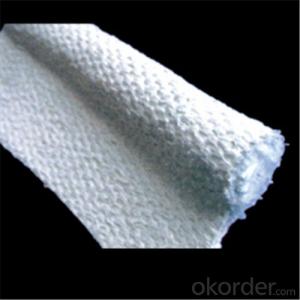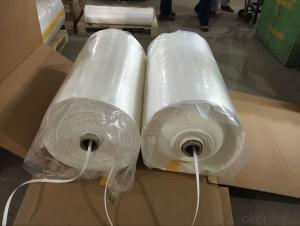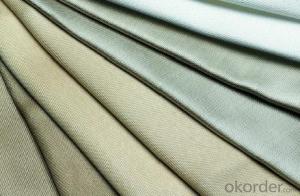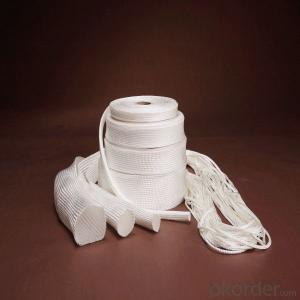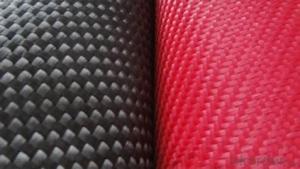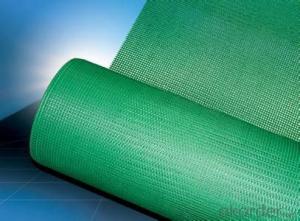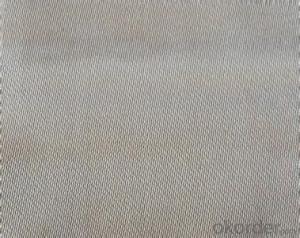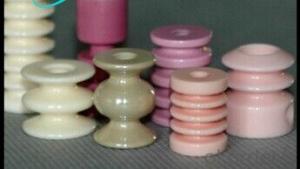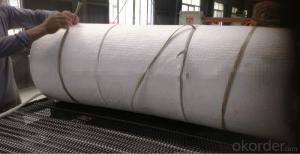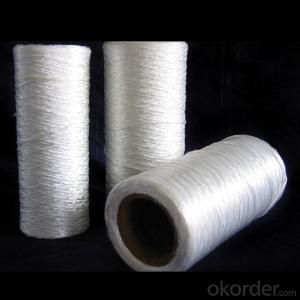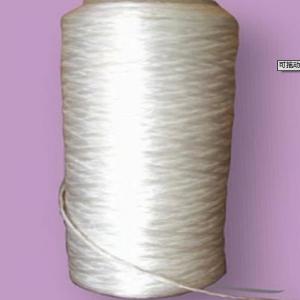Glass Fiber Textiles - High Silica Fiberglass Cloth Resisting 1000 Centigrade
- Loading Port:
- China main port
- Payment Terms:
- TT OR LC
- Min Order Qty:
- 50 m
- Supply Capability:
- 10000 m/month
OKorder Service Pledge
OKorder Financial Service
You Might Also Like
Product Description
Silica fiberglass is inorganic fiber that contents more than 96% of SiO2, it's resistant to high temperature, soft point 1700°C, long term service temperature 900 °C, it can work 10 minites at 1450 °C and keeps good state at 1600 °C for 15 seconds. For it's properties of chemical stability, high temperature resistance and ablation resistance, it widely used in aviationand aerospace, metallurgy, chemical, building material and fire fighting industry, etc.
Our factory is the only one that specialized manufacture silica fiberglass in China and has the production line of the whole process from marble making, fiber forming, weaving, and finish. The strength of silica fiberglass made from Na2O-B2O3-SiO2 system glass is 3-5 times higher than that from E glass. The products sold to more than 20 provinces, cities, autonomous regions and exported to foreign countries.
Silica fiberglass products are available in forms of needled mat, fabric, scrim, staple yarn, chopped strand and cord, etc.
Product Properties
1> SiO2>=96%
2> soft point nearly 1700°C, long-time working at 900°C
3> low thermal conductivity
4> good chemical stability
5> good electrical insulation
6> low thermal shrinkage
7> Non-asbestos product without pollution
8> good process performance
Product Uses
High temperature resistant, insulation and sealing material
High temperature ablation resistant material
Fireproof material (for fireproof protective clothe, fireproof curtain, fire blanket)
Dust collecting in media of high temperature gas and filtration in media of high temperature liquid
Filter for molten metal
Distinguisher, insulation material, filtration of automobile and motorcycle
Protective material for welding
Electricity insulation material

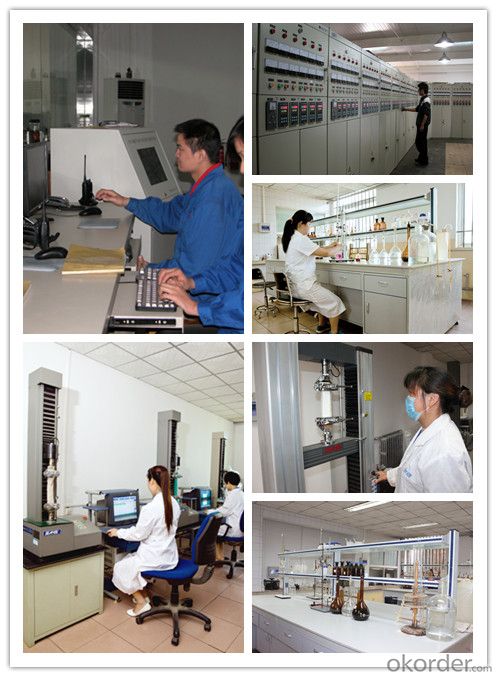
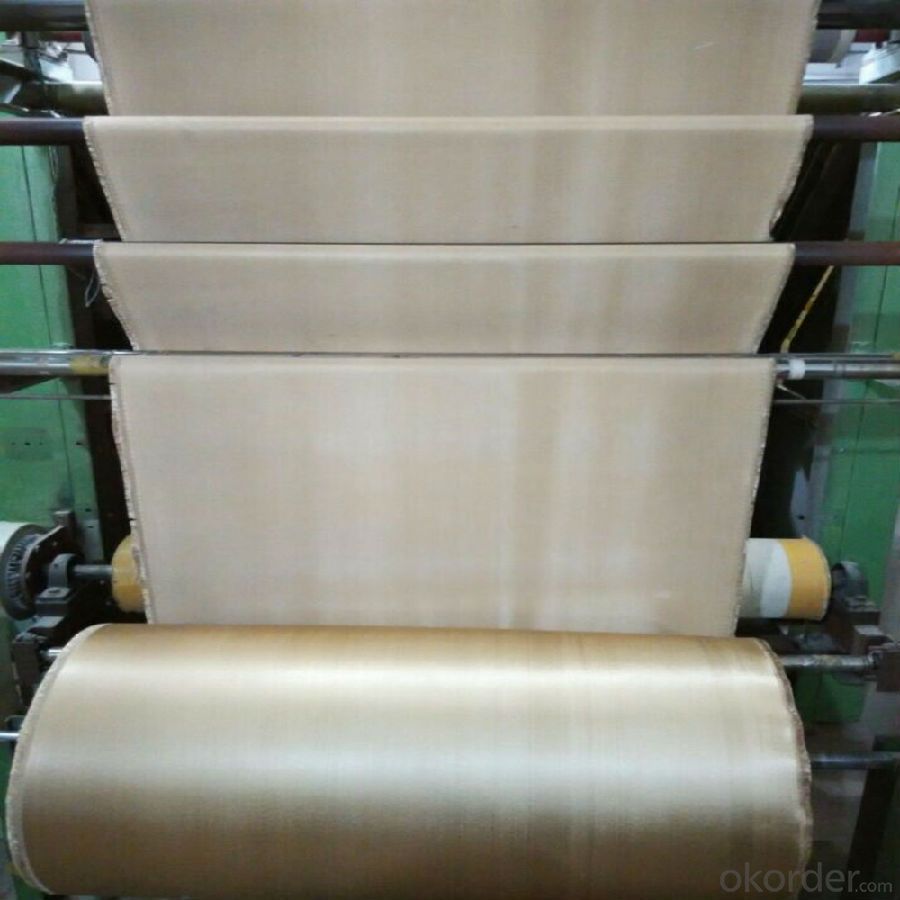
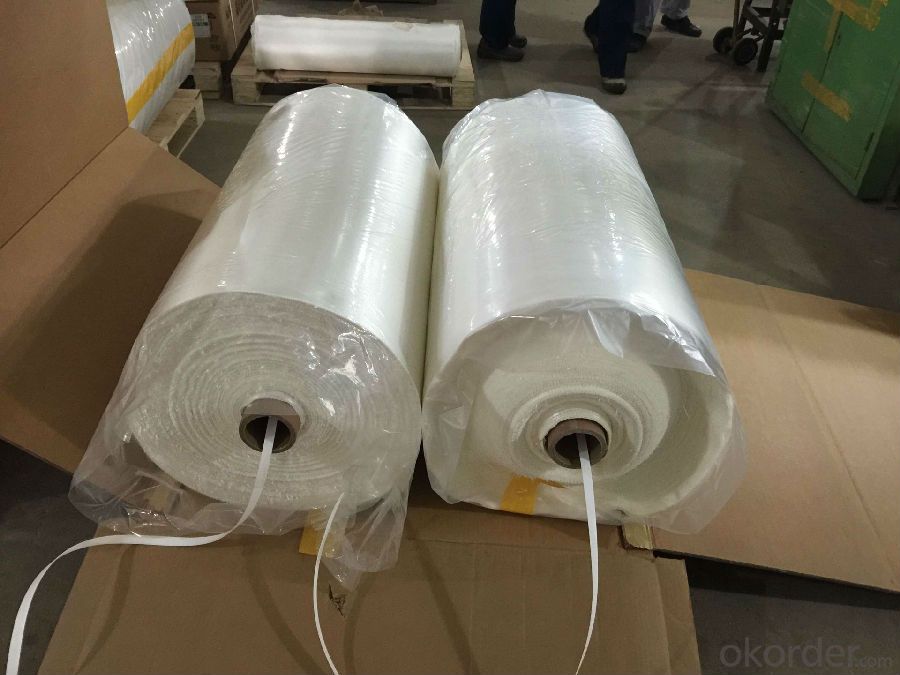
- Q: Can glass fiber textiles be used for reinforcement in concrete pipes?
- Concrete pipes can be reinforced using glass fiber textiles, also known as fiberglass textiles. These textiles are made by weaving or knitting fine glass fibers together to create a fabric. They possess excellent corrosion resistance and high tensile strength, making them ideal for reinforcing concrete structures, such as pipes. By incorporating glass fiber textiles into concrete pipes, their structural integrity and durability can be improved. These textiles are usually embedded within the concrete, providing reinforcement that prevents cracking and strengthens the overall pipe. The glass fibers' high tensile strength helps distribute the load evenly, preventing cracks from forming under pressure. In addition, glass fiber textiles have a remarkable resistance to chemicals and corrosion, which is particularly crucial for concrete pipes that may encounter aggressive substances. This corrosion resistance ensures that the reinforcement remains strong and intact, even in harsh environments. Glass fiber textiles also offer advantages over traditional steel reinforcement in concrete pipes. They are lightweight, non-magnetic, and non-conductive, simplifying installation and reducing the risk of interference with electrical or magnetic systems. Moreover, their lower thermal expansion coefficient compared to steel means they are less likely to cause cracks due to temperature changes. Overall, glass fiber textiles are a viable choice for reinforcing concrete pipes. Their high tensile strength, corrosion resistance, and other positive properties enhance the performance and lifespan of concrete pipe systems.
- Q: How do glass fiber textiles contribute to moisture resistance?
- Glass fiber textiles contribute to moisture resistance through their inherent properties. Glass fibers are made from a non-absorbent material, meaning they do not readily soak up or retain moisture. This helps to prevent water from seeping through the textile and reaching the underlying materials or surfaces. Additionally, glass fiber textiles are often woven or knitted into a tight and dense structure, which creates a barrier against moisture. The interlocking fibers form a physical barrier that prevents water molecules from passing through, thereby enhancing the moisture resistance of the textile. Moreover, glass fibers are highly resistant to mold and mildew growth, which can be triggered by moisture. This resistance is due to the inorganic nature of glass fibers, as mold and mildew typically thrive on organic materials. By inhibiting the growth of these microorganisms, glass fiber textiles help to maintain a dry and moisture-free environment. Furthermore, glass fiber textiles can be treated with water-repellent coatings or finishes to enhance their moisture resistance. These coatings create a hydrophobic surface, causing water to bead up and roll off the textile rather than being absorbed. This additional layer of protection further improves the moisture resistance of glass fiber textiles. In summary, glass fiber textiles contribute to moisture resistance through their non-absorbent nature, dense structure, resistance to mold and mildew, and the potential for water-repellent coatings. These properties make glass fiber textiles an excellent choice for applications where moisture resistance is crucial, such as in outdoor clothing, upholstery, or building materials.
- Q: Are glass fiber textiles resistant to wrinkling during washing?
- Yes, glass fiber textiles are generally resistant to wrinkling during washing. Glass fiber is known for its strength and resilience, making it less prone to wrinkling compared to other textile materials. However, it is important to note that the specific properties and characteristics of the glass fiber textile, such as the weave, fabric construction, and finishing treatments, may also affect its wrinkle resistance. It is always recommended to follow the care instructions provided by the manufacturer to ensure proper washing and maintenance of glass fiber textiles.
- Q: Can glass fiber textiles be used in reinforcement of metal composites?
- Yes, glass fiber textiles can be used in the reinforcement of metal composites. Glass fibers are known for their high strength and stiffness, making them an ideal material for reinforcing metal composites. When incorporated into a metal matrix, glass fibers can enhance the mechanical properties such as tensile strength, flexural strength, and impact resistance of the composite material. The glass fibers act as a reinforcement, providing additional strength and durability to the metal matrix. Additionally, glass fibers can also improve the dimensional stability and thermal properties of the metal composites. Overall, the use of glass fiber textiles in the reinforcement of metal composites can result in stronger and more lightweight materials, making them suitable for a wide range of applications in industries such as aerospace, automotive, and construction.
- Q: Is glass fiber textile lightweight?
- Glass fiber textile is indeed lightweight. It is produced by weaving thin strands of glass together to create a textile material. This material is renowned for its lightweight attributes, which has led to its widespread use in numerous industries like aerospace, automotive, and construction. The lightweight nature of glass fiber textile enables easier handling, transportation, and installation, while still delivering impressive strength and durability. Moreover, its low weight contributes to energy efficiency in applications such as insulation and composites. All in all, glass fiber textile is the perfect option when a lightweight material with exceptional performance qualities is needed.
- Q: How does glass fiber textile perform under mechanical stress?
- Glass fiber textile performs very well under mechanical stress. It is known for its high tensile strength and excellent resistance to stretching and breaking. This makes it a durable and reliable material that can withstand various mechanical forces without losing its structural integrity.
- Q: Can glass fiber textiles be used for reinforcement in fiberglass boats?
- Yes, glass fiber textiles can be used for reinforcement in fiberglass boats. In fact, they are commonly used in the construction of fiberglass boats due to their high strength-to-weight ratio and excellent resistance to corrosion and moisture. Glass fiber textiles are typically woven or knitted into fabric or mat forms, which are then impregnated with a resin, such as polyester or epoxy, to create a composite material. This composite material, known as fiberglass, provides structural integrity and enhances the overall strength and durability of the boat. The textiles can be applied to various parts of the boat, including the hull, deck, and interior, to reinforce specific areas and improve the boat's performance and longevity.
- Q: What do 02 and 04 of fiberglass cloth refer to?
- Glass fiber fabric is a roving fabric, and it is an important base material of hand sticking glass fiber reinforced plastic. The main strength of cloth on the latitude and longitude direction of fabric, weft or warp for high strength occasions, can also be woven into unidirectional cloth, it can be more roving to warp or weft arrangement, single warp and single weft cloth to cloth. The roving roving is made up of parallel filaments or parallel filaments. According to the composition of glass, roving can be divided into E-GLASS alkali free glass roving and alkali glass roving in C-GLASS.
- Q: What is the lifespan of glass fiber textiles?
- The duration of glass fiber textiles can vary depending on several factors, such as the quality of the material, the specific application, and the level of maintenance. Generally, glass fiber textiles have a longer lifespan compared to other materials due to their durability and resistance to wear and tear. When utilized in industrial insulation, glass fiber textiles can endure for many decades. Their design allows them to withstand high temperatures, chemicals, and physical stress, making them well-suited for demanding environments. By ensuring proper installation and regular maintenance, glass fiber textiles can retain their integrity and effectiveness for an extended period. Nevertheless, it is crucial to consider certain factors that can impact the lifespan of glass fiber textiles. Prolonged exposure to extreme temperatures, excessive moisture, and harsh chemicals can gradually degrade the material, reducing its lifespan. Furthermore, improper handling or installation can also contribute to premature wear and tear. To maximize the lifespan of glass fiber textiles, it is essential to adhere to the manufacturer's guidelines for installation, usage, and maintenance. Conducting regular inspections and cleaning can aid in identifying any signs of damage or degradation, allowing for timely repairs or replacements. By properly caring for glass fiber textiles, their lifespan can be significantly prolonged, ensuring continued performance and cost-effectiveness.
- Q: What are the applications of glass fiber textile?
- Glass fiber textiles possess distinctive properties, making them applicable in various industries. Consider the following key uses of glass fiber textiles: 1. Composites reinforcement: Glass fiber textiles are extensively utilized as reinforcements in composite materials. They are integrated into plastic or resin matrices to enhance the final product's strength, stiffness, and durability. This renders them ideal for implementation in automotive components, aerospace parts, and construction materials. 2. Insulation: Glass fiber textiles exhibit exceptional thermal insulation properties, making them suitable for implementation in buildings, industrial equipment, and appliances. They effectively minimize heat transfer, prevent energy loss, and offer fire resistance. Common applications of glass fiber insulation include wall insulation, pipe insulation, and HVAC systems. 3. Filtration: The high porosity and retention efficiency of glass fiber textiles make them suitable for use in various filtration systems. They efficiently eliminate particulate matter from air or liquids, making them ideal for air filters, water filters, and oil filters. Industrial processes, automotive engines, and HVAC systems commonly utilize glass fiber filters. 4. Electrical Insulation: Glass fiber textiles possess superior electrical insulation properties and can withstand high temperatures. They function as insulation materials in electrical cables, transformers, and motors. To provide insulation and safeguard against electrical breakdown, conductors are wrapped with glass fiber textile tapes or fabrics. 5. Textile reinforcement: Glass fiber textiles can be blended with other fibers, such as cotton or polyester, to enhance the strength and durability of textile materials. This makes them suitable for application in sportswear, protective clothing, and upholstery fabrics. 6. Geotextiles: Within civil engineering and construction projects, glass fiber textiles can serve as geotextiles. They fulfill reinforcement, erosion control, and separation functions. Road construction, embankments, retaining walls, and landfills commonly employ glass fiber geotextiles. In conclusion, glass fiber textiles are versatile materials with a wide range of applications across various industries. Their unique properties render them desirable for reinforcement, insulation, filtration, electrical insulation, textile reinforcement, and geotextile applications.
Send your message to us
Glass Fiber Textiles - High Silica Fiberglass Cloth Resisting 1000 Centigrade
- Loading Port:
- China main port
- Payment Terms:
- TT OR LC
- Min Order Qty:
- 50 m
- Supply Capability:
- 10000 m/month
OKorder Service Pledge
OKorder Financial Service
Similar products
Hot products
Hot Searches





